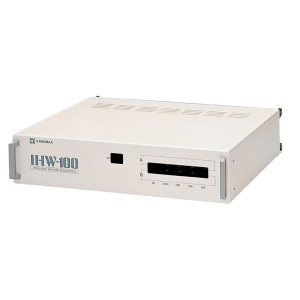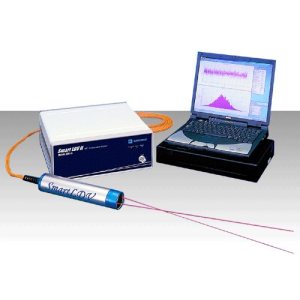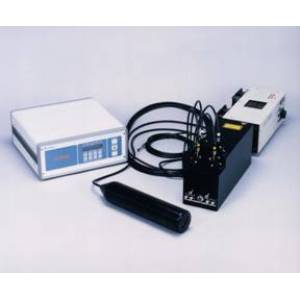测量效果: 平面(二位/三维)
产地类别: 进口
测量频率: 低频
测速范围: 0-2km/s
测定准确度: 1%
测量区域大小: 1mx1m
看了粒子图像测速仪(PIV)的用户又看了
仪器简介:
迄今,PIV用户仍然需要具有相当丰富的知识和经验来选择最优化的数据记录(主要是粒子图像数据记录)参数和恰当的数据分析处理参数,特别是相关运算的问询域尺度的设置。相关运算问询域尺度的设定是需要一定的技巧经验甚至是艺术的。因为在设置这一参数时,须在分析的鲁棒性,精度和有效空间分辨率等目标之间进行必要的权衡和取舍。此外, 由于所观测流场各局部区域之间的示踪粒子密度,图像质量和流动条件具有不可避免的差异和变化,对流场采用全局统一单一的分析参数设置将永远无法实现对整个流场的各部分均有效的最优化。
LaVision公司最新的自适应PIV(Adaptive PIV)技术的推出,提供了一种根据流场在各个局域流动梯度(流动的自适应)和图像质量(信号的自适应)全自动优化计算并设置局部相关运算问询域的尺寸和形状的方法。这种技术极大地改善了PIV测量的精度和空间分辨率。尤其是对于像近壁面,剪切流等流场的梯度很大的区域。
技术参数:
??提高了分析处理的空间分辨率,精度和运算速度。
??自动适应局部流动特点,全自动,无需人工干预地优化设置局部问询域尺寸和形状。
??控制图像的对焦,亮度,失踪粒子密度以及双帧曝光时间间隔dt
??用户友好的交互界面: 参数自动设定和优化,不用人工设定,定义。
主要特点:
LaVision的FlowMaster® 系统能够不经过人工干预直接判定设置局域示踪粒子密度,图像对比度/动态范围和最大位移量。在实验装置建立过程中为用户提供实时有效的反馈。PIV测量所特有的也是最重要的拍摄记录参数-跨帧拍摄时间间隔可以自动优化设置。
用流动梯度的强度和反映示踪粒子密度,图像质量,离开平面运动的相关函数峰值强度(不仅仅是峰值的位置)等这两类因素的组合来决定相关运算问询域的尺度。在梯度大的区域,例如漩涡处,较小的问询域更为合适,而在粒子密度低并有较强的脱离测量平面运动分量的情况下则需要设置更大的问询域。此外用加长的问询域窗口形状,使长轴垂直于局部流动梯度最大的方向可以使相互垂直的两个方向中的一个方向上的空间分辨率增强,同时保证在长轴方向上粒子有足够大的位移像素数目,以保证速度矢量的测量精度。这种处理方法对沿着流体具有强剪切流动的区域更为重要。在这些区域,问询域窗口可以自动地被调整为沿着边界排列。当然,问询域窗口的尺寸和形状是完全自动选择设置的不需要低效,费时,繁琐的人工定义。这种完全自动的,自适应的定义问询域的方法适用于各种流动对象。而那种人工定义问询域的方法,当速度矢量场是非定常的(实事上这是流动的更一般的形态,定常流动只是一个理想化的状态。任何流动都只可能是在一定范围内的近似定常流动,没有绝对的定常流动)时候将会实效。因为流动结构特点在被测区域上的空间位置会随着时间变化,移动。为了适应多种流动特点,问询域窗口尺寸的自动调整设置范围以及自适应程度均可由用户根据具体情况灵活地自行定义和设置。

热线风速仪CTA/HWA
型号:IHW-100 10万 - 30万
紧凑型激光多普勒测速系统
型号:Smart LDV II 面议
激光多普勒测速仪
型号:LDV 面议
BubbleMaster气泡检测仪
型号:BubbleMaster 10万 - 30万湍流本质上具有三维(3D)立体结构属性。普通的二维(2D)包 括采用激光照明的成像测量无法在所有三个空间维度上分辨湍流 的结构。而利用多视角成像信息,采用层析重构技术则可以在三 个空间维度上同时捕捉记录复杂流动的瞬态结构。应用针对体像 素的三维(3D)相关处理技术,可以由时间相关的体成像数据计 算出瞬态三维空间的流场。 LaVision功能强大的,基于层析粒子成像测速(Tomo-PIV)和层 析粒子跟踪测速(Tomo-PTV)技术的FlowMaster激光成像系统, 能够以极高的空间分辨率记录强湍流,火焰以及喷雾对象的瞬态 体视流场。
Two-dimensional velocity fields around a freely swimming freshwater black shark fish in longitudinal (XZ) plane and transverse (YZ) plane are measured using digital particle image velocimetry (DPIV). By transferring momentum to the fluid, fishes generate thrust. Thrust is generated not only by its caudal fin, but also using pectoral and anal fins, the contribution of which depends on the fish’s morphology and swimming movements. These fins also act as roll and pitch stabilizers for the swimming fish. In this paper, studies are performed on the flow induced by fins of freely swimming undulatory carangiform swimming fish (freshwater black shark, L = 26 cm) by an experimental hydrodynamic approach based on quantitative flow visualization technique. We used 2D PIV to visualize water flow pattern in the wake of the caudal, pectoral and anal fins of swimming fish at a speed of 0.5–1.5 times of body length per second.
Single-shot, tomographic imaging of the three-dimensional concentration field is demonstrated in a turbulent gaseous free jet in co-flow using volumetrically illuminated laser-induced fluorescence. The fourthharmonic output of an Nd:YAG laser at 266 nm is formed into a collimated 15 × 20 mm2 beam to excite the ground singlet state of acetone seeded into the central jet. Subsequent fluorescence is collected along eight lines of sight for tomographic reconstruction using a combination of stereoscopes optically coupled to four two-stage intensified CMOS cameras. The performance of the imaging system is evaluated and shown to be sufficient for recording instantaneous three-dimensional features with high signal-tonoise (130:1) and nominal spatial resolution of 0.6–1.5 mm at x/D = 7–15.5.
Many marine organisms have complex life histories, having sessile adults and relying on the planktonic larvae for dispersal. Larvae swim and disperse in a complex fluid environment and the effect of ambient flow on larval behavior could in turn impact their survival and transport. However, to date, most studies on larvae–flow interactions have focused on competent larvae near settlement. We examined the importance of flow on early larval stages by studying how local flow and ontogeny influence swimming behavior in pre-competent larval sea urchins, Arbacia punctulata. We exposed larval urchins to grid-stirred turbulence and recorded their behavior at two stages (4- and 6-armed plutei) in three turbulence regimes. Using particle image velocimetry to quantify and subtract local flow, we tested the hypothesis that larvae respond to turbulence by increasing swimming speed, and that the increase varies with ontogeny.
LaVision GmbH粒子图像测速FlowMaster®-Adaptive的工作原理介绍
粒子图像测速FlowMaster®-Adaptive的使用方法?
LaVision GmbHFlowMaster®-Adaptive多少钱一台?
粒子图像测速FlowMaster®-Adaptive可以检测什么?
粒子图像测速FlowMaster®-Adaptive使用的注意事项?
LaVision GmbHFlowMaster®-Adaptive的说明书有吗?
LaVision GmbH粒子图像测速FlowMaster®-Adaptive的操作规程有吗?
LaVision GmbH粒子图像测速FlowMaster®-Adaptive报价含票含运吗?
LaVision GmbHFlowMaster®-Adaptive有现货吗?
最多添加5台
